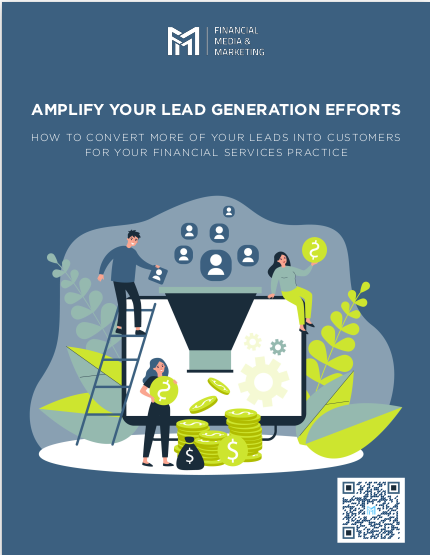Leveraging Social Media for Insurance Agent Marketing
Key Takeaways:
- Building Brand Awareness and Connecting with Audience: Social media offers insurance agents a global stage to showcase expertise, connect directly with target audiences, and nurture relationships, leading to increased brand visibility and long-term client loyalty.
- Crafting an Effective Social Media Strategy: To maximize social media impact, agents should define clear goals, understand their audience, share valuable content consistently, engage with followers, leverage visual content, use hashtags wisely, and regularly analyze performance metrics to refine their strategy.
In today’s digital landscape, social media has become an indispensable tool for insurance agents looking to connect with clients, expand their reach, and build a robust online presence. Leveraging the power of social media for insurance agent marketing can significantly impact your ability to attract new clients and retain existing ones. In this comprehensive guide, we’ll explore how insurance agents can harness the potential of social media to enhance their marketing efforts and stay ahead in the competitive insurance industry.
The Importance of Social Media for Insurance Agents
1. Building Brand Awareness
Social media platforms provide insurance agents with a global stage to showcase their expertise and establish their personal brand. By consistently sharing valuable content and engaging with your audience, you can increase your brand visibility and recognition.
2. Connecting with Your Target Audience
Social media enables you to connect directly with your target audience, including potential clients and industry peers. Building and nurturing relationships on these platforms can lead to new business opportunities, referrals, and long-term client loyalty.
3. Educational Opportunities
Insurance is a complex field, and many clients may not fully understand their policies and options. Social media offers an excellent platform for educating your audience. By sharing informative content, you can empower clients to make informed decisions about their insurance needs.
4. Content Distribution
Your social media profiles serve as distribution channels for your content. Whether you’re sharing blog posts, videos, or infographics, social media allows you to reach a broader audience and drive traffic to your website or landing pages.
Choosing the Right Social Media Platforms
Not all social media platforms are created equal, and it’s essential to select the ones that align with your target audience and business goals. Here are some popular social media platforms for insurance agents:
1. LinkedIn
LinkedIn is a professional networking platform ideal for insurance agents. It allows you to connect with industry peers, share thought leadership content, and build a professional network. LinkedIn is especially effective for B2B insurance sales.
2. Facebook
With its extensive user base, Facebook offers insurance agents the opportunity to reach a diverse audience. You can create a business page, share updates, run targeted ads, and engage with local communities.
3. Twitter
Twitter is a great platform for sharing short, timely updates and engaging in real-time conversations. It’s particularly useful for sharing industry news, insights, and participating in relevant trending topics.
4. Instagram
Instagram is a visual platform that’s effective for sharing compelling images and short videos. It’s ideal for showcasing your agency’s culture, community involvement, and client success stories.
5. YouTube
If you produce video content, YouTube is a must. It’s the second-largest search engine globally, and creating informative video content can help you reach a broad audience.
Crafting an Effective Social Media Strategy
To maximize the impact of your social media efforts, you need a well-thought-out strategy. Here are the key steps to creating an effective social media strategy for insurance agent marketing:
1. Define Your Goals
Identify your specific objectives for using social media. These goals could include increasing brand awareness, generating leads, or providing customer support.
2. Know Your Audience
Understand your target audience’s demographics, preferences, and pain points. Tailor your content to resonate with their needs and interests.
3. Develop a Content Calendar
Create a content calendar to plan and schedule your social media posts. Consistency is crucial, so having a schedule in place ensures you regularly engage with your audience.
4. Share Valuable Content
Share content that provides value to your audience. This could include educational blog posts, insurance tips, client testimonials, and industry news. Mix up your content to keep it engaging.
5. Engage and Interact
Social media is a two-way street. Respond to comments and messages promptly, engage in discussions, and build relationships with your followers.
6. Leverage Visual Content
Visual content, such as images and videos, tends to perform well on social media. Consider creating informative videos, infographics, and eye-catching graphics to capture your audience’s attention.
7. Use Hashtags Wisely
Hashtags can help increase the discoverability of your posts. Research relevant hashtags in your industry and include them in your posts when appropriate.
8. Analyze and Adjust
Regularly monitor your social media analytics to assess the performance of your posts. Use these insights to refine your strategy and focus on what’s working best.
Compliance and Regulation
Insurance is a highly regulated industry, and insurance agents must adhere to compliance standards when using social media. Here are some tips to ensure compliance:
1. Familiarize Yourself with Regulations
Stay informed about the regulations and guidelines specific to insurance marketing in your region. This includes rules governing advertising, disclosure, and client privacy.
2. Use Disclaimers
Include appropriate disclaimers in your social media posts when necessary. For example, when discussing policy benefits or specific insurance products, add a disclaimer indicating that terms and conditions apply.
3. Avoid Making Guarantees
Be cautious about making guarantees or promises in your social media content. Insurance policies are subject to underwriting and approval, and outcomes can vary.
4. Maintain Client Privacy
Protect client privacy by avoiding the sharing of sensitive information or client-specific details on social media.
Measuring Your Social Media Success
Measuring the effectiveness of your social media efforts is essential to track your progress and make data-driven decisions. Key performance indicators (KPIs) to consider include:
- Follower growth: The number of new followers you gain over time.
- Engagement rate: The level of interaction your posts receive (likes, comments, shares).
- Click-through rate (CTR): The percentage of users who click on your links or CTAs.
- Lead generation: The number of leads generated through social media campaigns.
- Conversion rate: The percentage of leads that convert into clients.
Conclusion
Leveraging social media for insurance agent marketing can be a game-changer in today’s competitive landscape. By strategically utilizing platforms that align with your target audience, crafting valuable content, engaging with your followers, and adhering to industry regulations, you can build a strong online presence, foster meaningful relationships, and ultimately grow your insurance agency. Remember that success on social media takes time and consistent effort, but the rewards in terms of client acquisition and retention can be significant.










